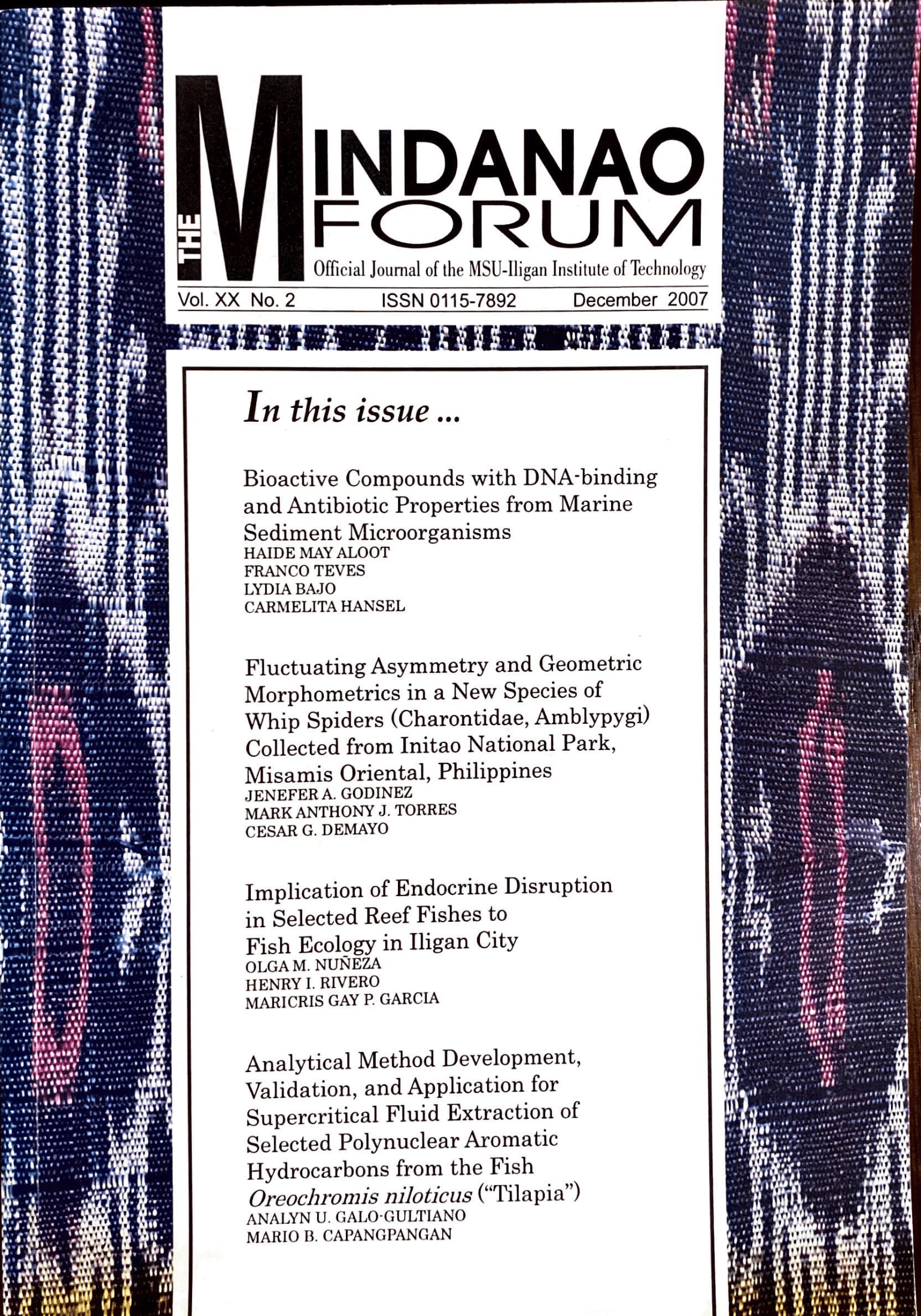Assessment of Concentration Levels of Heavy Metals in Selected Fish Species from the Macajalar Bay Area in Misamis Oriental
Abstract
Concentration levels of zinc, lead, copper, chromium and cadmium in the edible and inedible parts of different fish species from three sampling sites in Macajalar Bay Area and one in Camiguin Island were determined using anodic stripping voltammetry to assess the extent of metal contamination on fish in the area. The concentration levels of metal analytes in edible parts were compared to those in inedible parts of fish. The metal concentrations in fish and water samples were also compared to the maximum permissible levels set by authorities.
Concentration levels in microgram per gram (μg/g) or parts per million (ppm) were generally higher in the inedible compared to the edible parts of fish. Average concentration ranges for zine metal were from below detection limit to 21.08 and 31.34 μg/g wet basis (26.89 and 47.84 μg/g dry basis) in edible and inedible parts, respectively. Lead was not detected in the edible part while the average concentration range in the inedible parts is from below detection limit to 0.770 μg/g wet basis (1.18 μg/g dry basis). Average copper ranges from below detection limit to 26.826 and 33.901 μg/g wet basis (34.22 and 51.76 μg/g dry basis) in the edible and inedible parts, respectively. Cadmium and chromium concentrations were below detection limit in both parts during the two sampling periods. Concentrations of metal analytes in fish in wet basis were used in the subsequent calculation of bioaccumulation factors (BAF).
Copper metal in the edible parts of fish exceeded the maximum permitted concentration set by Australia / New Zealand Food Authority (ANZFA) and the maximum permissible levels in water supporting aquatic life set by the U.S. Environmental Protection Agency (U.S. EPA). Zinc in edible parts of fish exceeded the maximum permissible levels of trace metals for water suitable for fish/shellfish growth set by the Department of Environment and Natural Resources (1990).
Metal levels in water were also determined to assess the bioaccumulation factors (BAF) of analyte metals in fish. Mean concentrations were 0.075 μg/mL, 0.010 μg/mL and 0.333 μg/mL for zinc, lead and copper, respectively. The mean zinc and lead concentrations in water were below the maximum permissible levels set by the U.S. EPA and by the DENR while the mean copper concentration exceeded the permissible level in water supporting aquatic life set by the U.S. EPA. Other metals such as cadmium and chromium were below the maximum permissible limit set by the agencies.
Bream ("Bodbod"), and parrot fish ("Molmol") were found to exhibit positive bioaccumulation for metal analytes. Bream has the potential to bioaccumulate zinc (BAF=120.09) and copper (BAF-130.67). On the other hand, parrot fish has the potential to bioaccumulate copper only (BAF = 159.0).





